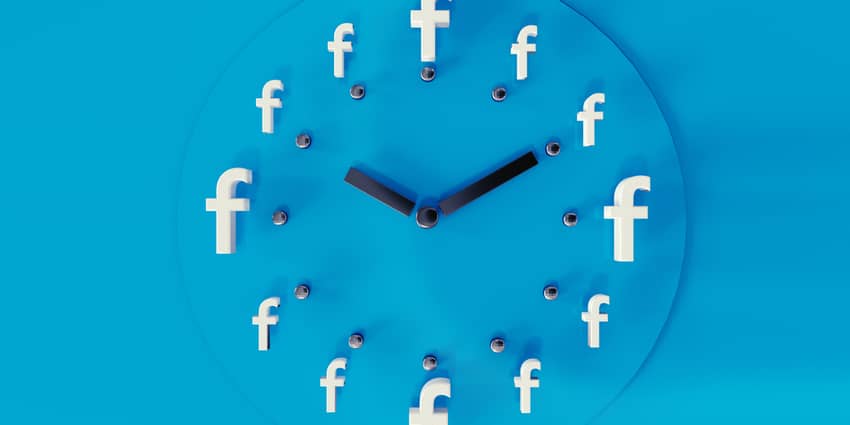"Facebook just isn't working for me."
How many times have you heard that from a business owner? Facebook is, in fact, one of the better tools to use when you're starting out. Why? Because it offers a targeted advertising system.
So, what's the difference between your business and other businesses? Those guys have a proper Facebook sales funnel in place. They don't employ a "here's my product, buy now" approach.
How do you set up a Facebook Ad funnel that works for your eCommerce products? In this article, we'll lay out an actionable plan to build an effective sales funnel on Facebook.
Why is a Facebook ads funnel important?
To understand why it's important to use a Facebook ads funnel, you have to think about it from the perspective of a customer. Your customers are often bombarded with ads in their feeds, stories and inboxes. When you think about just how much time a person spends on social media, you can see how these ads often come and go like traffic. Sometimes they don't convert, but the point sticks in your memory. When you see a series of ads, it provides you with the opportunity to convert at a different touchpoint.
This is because most people are not ready to purchase after just seeing one ad. The real valuable conversions typically happen once a user interacts with your brand multiple times. It's this multiplicity that makes the foundation of a successful sales funnel.
1. Understand how your marketing funnel works
Before we get into the tactics on Facebook, the first step is to understand each potential customer's circumstance and show them the right message which resonates with them personally. The trick here is to do it at the right time.
Traditionally, the buying cycle is separated into three different stages:
- Awareness: People in this stage don't know your product, all they have is a problem that they need solved. They are typically not ready to purchase yet.
- Consideration: Once they identify a need, they will start researching potential options.
- Decision: At this final stage, the consumer will start exploring the different options they have discovered in the previous stage.
2. Create different types of content, on your website
As part of your content marketing strategy, you should have different types of content. This could be blog posts, videos, infographics, webinars or eBooks. After all, there's never a one-size fits all solution. As long as these pieces are consistent with your brand, high-quality and attention-grabbing, you will be able to reach more potential customers on Facebook.
3. Attracting new visitors
At the top of the funnel or the Awareness stage, your Facebook goal is to attract new audiences. As a result, this new audience will be cold, meaning they don't know you and (most likely) they don't trust you, unless you're the Nike's and Adidas's of the world. For the most part, you want to go broad at this stage:
- Lookalike audience (of your past converters or website traffic)
- Saved audience (based on demographics, location, interests, behaviour)
You should be aiming for the following campaign objectives and be prepared to spend a little bit more weeding out some of the low-interest leads:
- Brand awareness
- Reach
- Traffic
- Video views
4. Turning your cold visitors into leads
In this middle stage, your goal is to turn your new visitors into leads. This stage is all about nurturing. You want to promote your content to this group of people and monitor engagement levels.
What is nurturing?
Nurturing is building relationships with your prospects. Think of it as your potential customers opening up a direct line of communication with you. They want to know more, they want to be inspired and educated. Nurturing them in the right way, using the right mix, will gradually turn these visitors into warm leads for your brand.
This would be a good time to direct your leads to a website or landing page, with a capture form for emails in exchange for something else of value like an offer or downloadable pdf. It's essential that you capture information about your leads, as you can use this information down the line to move them closer to purchasing.
At this stage, you can use Custom Audiences to retarget users that have visited your website or interacted with your Facebook Page or posts. You should be aiming for traffic, engagement or conversions as an objective.
5. Remarketing
Two words. Facebook Pixel.
For those who aren't familiar with a Facebook Pixel, here's how it works:
You can create a Facebook Pixel in your Business Manager account. Add the pixel code to your website and you can use it to remarket to your website visitors over a certain period.
Remarketing can take the following forms: customer lists, website traffic and app activity. In eCommerce we typically use the first two forms. Facebook remarketing ads get three times the level of engagement than regular Facebook ads. By doing this, you are able to expose your warm leads to your brand at several touchpoints.
6. Turning leads into paying customers
Now that you've really warmed up your audience. This is where you go with the hard sell. At this point your leads are familiar with your brand and primed to buy. These are the guys that have downloaded your pdf or taken part in your offer.










 Facebook
Facebook Twitter
Twitter Instagram
Instagram Linked In
Linked In YouTube
YouTube